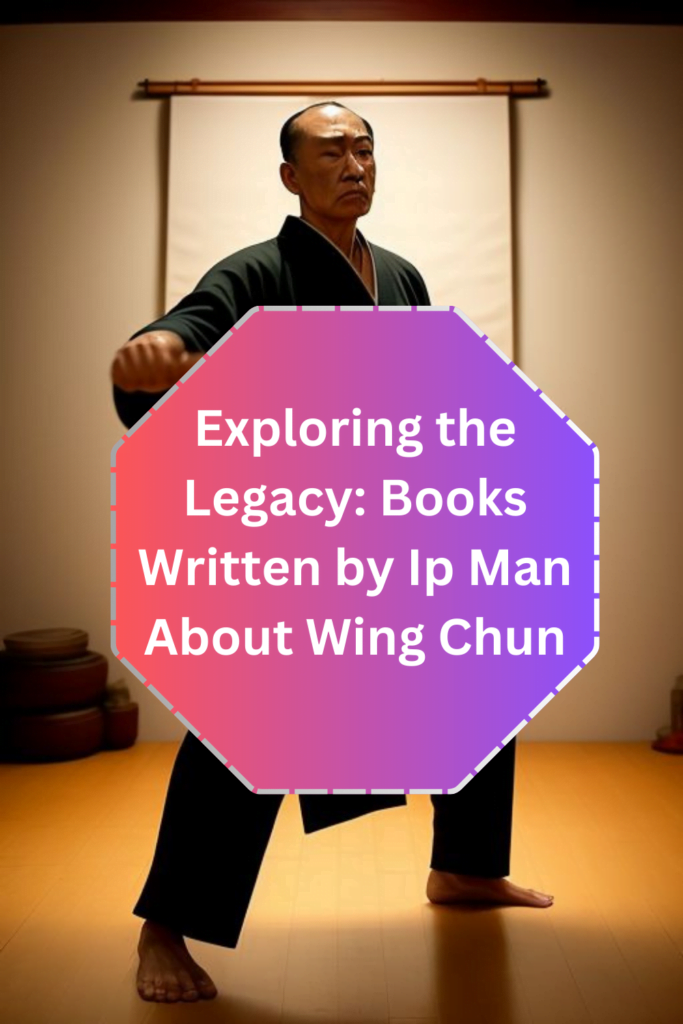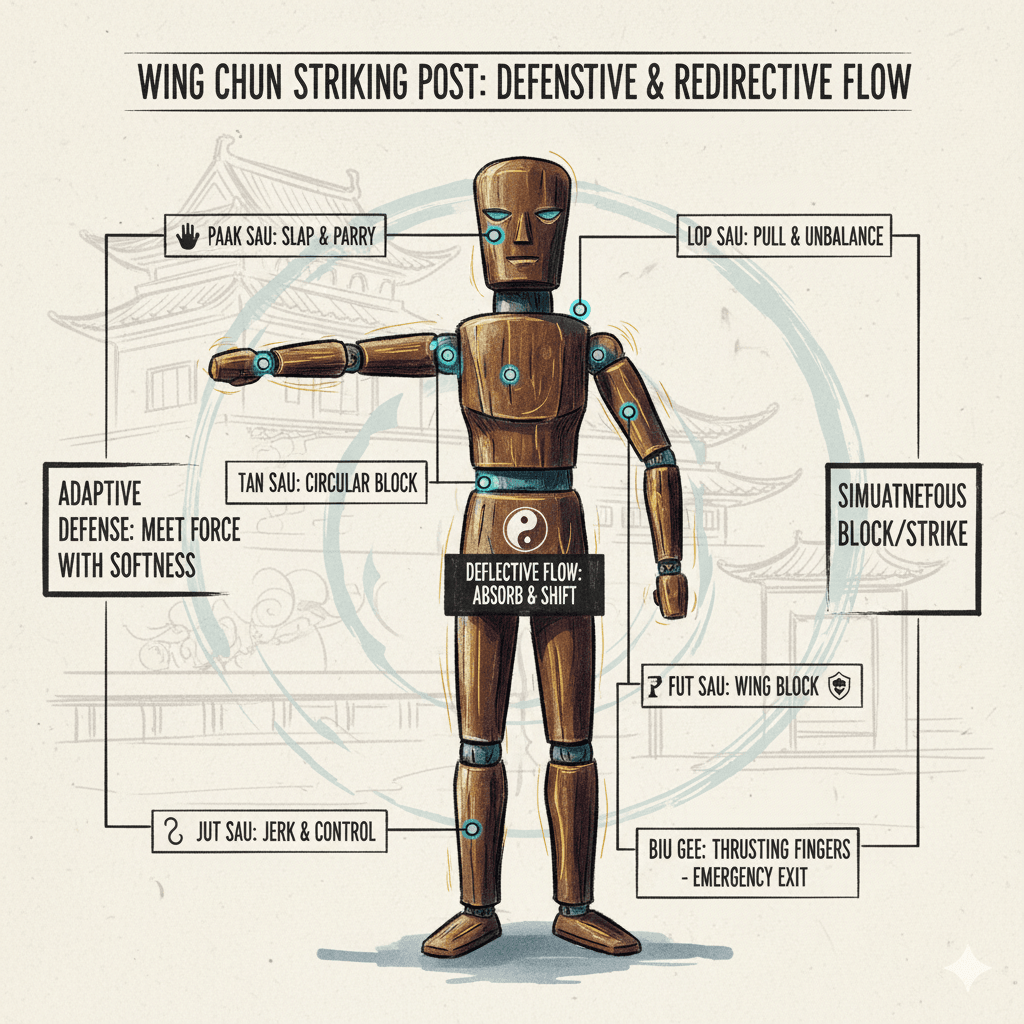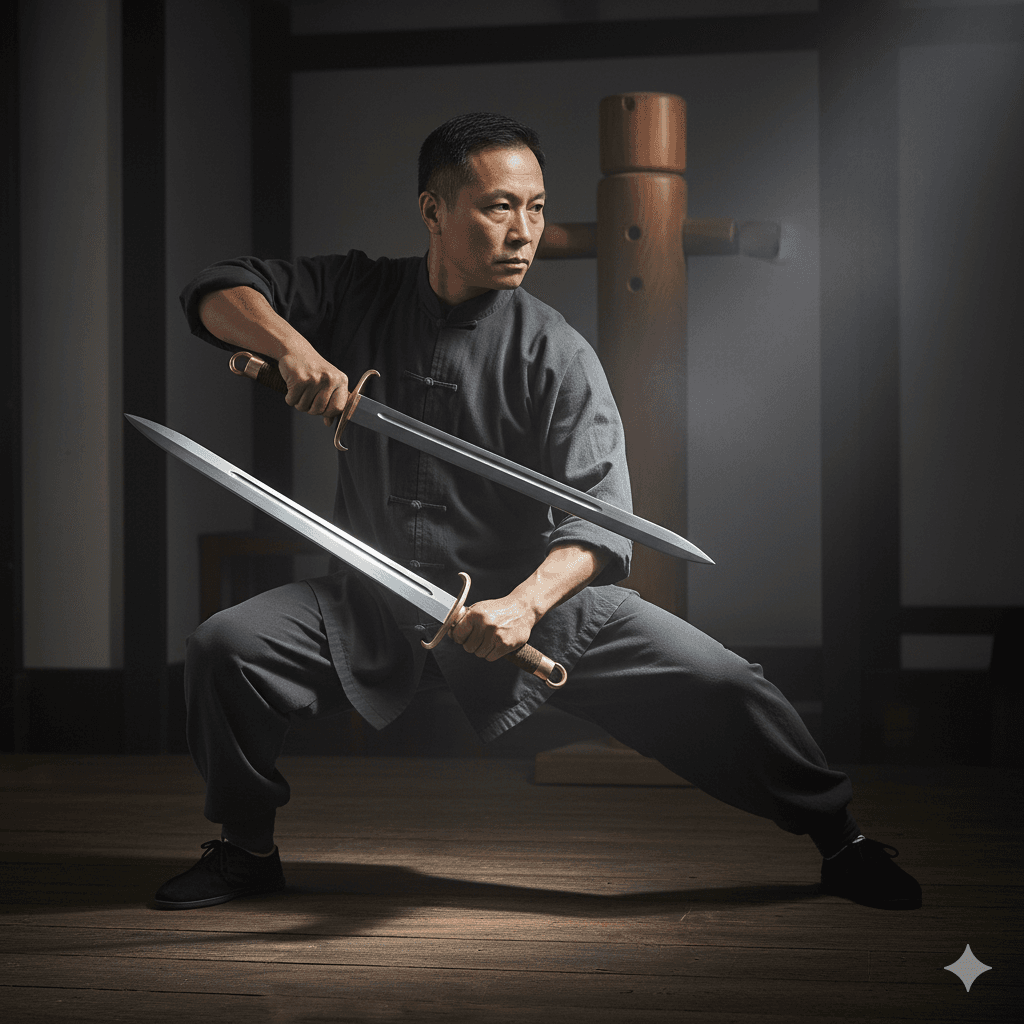Wing Tsun, a distinguished traditional Chinese martial art, has garnered global recognition for its efficient and practical self-defense techniques.
Originating in the Southern Shaolin Monastery, Wing Tsun was developed by the Buddhist nun Ng Mui and later refined by her disciple Yim Wing Chun, from whom the art derives its name.

Over the centuries, Wing Tsun has evolved, integrating various elements to enhance its effectiveness in real-world confrontations.
At its core, Wing Tsun emphasizes the principles of relaxation, sensitivity, and directness.
The philosophy behind Wing Tsun is deeply rooted in the concept of using an opponent’s force against them, minimizing the need for brute strength.
This is achieved through relaxed movements that allow practitioners to maintain fluidity and responsiveness in combat.
Sensitivity training, often practiced through Chi Sau (sticking hands), enables students to develop a keen sense of touch, allowing them to react instinctively to their opponent’s movements.
Directness is another fundamental principle of Wing Tsun, advocating for the shortest and most efficient path to neutralize a threat.
This pragmatic approach makes Wing Tsun particularly effective in self-defense scenarios, where swift and decisive action is paramount.
Techniques such as chain punches, straight-line attacks, and simultaneous defense and counter-strikes are hallmarks of this martial art.
Beyond its technical aspects, Wing Tsun also embodies a philosophical dimension that promotes personal growth, discipline, and mental fortitude.
Practitioners are encouraged to cultivate a calm and focused mind, enabling them to remain composed under pressure.
This holistic approach to training has contributed to the global spread of Wing Tsun academies, where individuals from diverse backgrounds come together to learn and practice this ancient art.
As we delve further into the world of Wing Tsun, we will explore how this martial art has transcended cultural boundaries.
Establishing a presence in various countries and fostering a global community of practitioners dedicated to mastering its profound teachings.
Global Spread of Wing Tsun Academies
Wing Tsun, a traditional Chinese martial art, has seen a remarkable global expansion over the past few decades.
This widespread growth can be attributed to the efforts of pioneering martial artists who brought Wing Tsun from its origins in China to various corners of the world.
Among these trailblazers, Grandmaster Ip Man stands out as a pivotal figure.

His teachings laid the foundation for what would become a worldwide martial arts phenomenon.
The international spread of Wing Tsun gained momentum in the latter half of the 20th century.
Key figures such as Leung Ting, who established the International Wing Tsun Association (IWTA) in the 1970s, played a crucial role in this expansion.
The IWTA became a central body that facilitated the standardization and dissemination of Wing Tsun principles and techniques across different countries.
Leung Ting’s efforts were instrumental in introducing Wing Tsun to the West, including Europe and North America.
As Wing Tsun began to take root in different cultural contexts, the establishment of regional and national associations further accelerated its growth.
These organizations provided structured training and certification programs, ensuring the quality and consistency of Wing Tsun instruction worldwide.

Notable milestones include the formation of the European Wing Tsun Organization (EWTO) and the spread of Wing Tsun academies throughout Asia, Australia, and South America.
The global Wing Tsun community has also benefited from a rich cultural exchange between East and West.
Western practitioners have gained deeper insights into Chinese martial arts philosophy and practice.
While Eastern instructors have adapted their teaching methods to suit diverse learning environments.
This cross-cultural interaction has enriched the Wing Tsun experience.
Fostering a sense of unity and shared purpose among martial artists across the globe.
Today, Wing Tsun academies can be found in almost every major city, offering training to enthusiasts of all ages and backgrounds.
The legacy of those early pioneers continues to thrive, as Wing Tsun remains a dynamic and evolving martial art that bridges cultures and continents.
Top Wing Tsun Academies by Continent
Wing Tsun, a martial art with deep-rooted traditions, has found a global presence through numerous esteemed academies.
Each continent boasts institutions that have significantly contributed to the growth and dissemination of Wing Tsun.
Below, we explore some of the most prominent academies across various continents, highlighting their history, notable instructors, training programs, and impact on the Wing Tsun community.
Asia 🌏
Asia, the birthplace of Wing Tsun, houses several prestigious academies.
The Ving Tsun Athletic Association in Hong Kong, founded by Ip Man in 1967, stands as a historical pillar.
This academy is known for its rigorous training programs and has produced numerous renowned instructors, including Bruce Lee.
In Japan, the Tokyo Wing Tsun Academy offers a blend of traditional techniques and modern training methods, attracting martial artists from around the globe.
Europe 🌍

In Europe, the EWTO (European Wing Tsun Organization) stands out, with a network of schools across the continent.
Founded by Grandmaster Keith R. Kernspecht in Germany, the EWTO has been pivotal in popularizing Wing Tsun in Europe.
The organization offers comprehensive training programs and has a reputation for producing highly skilled practitioners.
Additionally, the UK Wing Chun Kung Fu Association, led by Master James Sinclair, is renowned for its dedication to preserving the art’s authenticity while adapting to contemporary training needs.
North America
North America is home to several top-tier Wing Tsun academies.
The Los Angeles Wing Tsun Academy, headed by Grandmaster Leung Ting, offers extensive training programs and seminars, attracting students from various backgrounds.
In Canada, the Vancouver Wing Tsun Academy, led by Sifu Ben Fung, is known for its inclusive training environment and emphasis on practical self-defense techniques.
Both academies have made significant contributions to the Wing Tsun community through workshops, demonstrations, and publications.
South America
In South America, the Brazilian Wing Tsun Academy in São Paulo, founded by Master Leo Imamura, has been instrumental in spreading Wing Tsun across the continent.
The academy is celebrated for its dynamic training programs and community outreach initiatives.
Another notable institution is the Wing Tsun Chile Academy, which emphasizes a holistic approach to training, blending physical techniques with mental and spiritual development.
Africa
Africa’s Wing Tsun scene, though smaller, is growing steadily.
The South African Wing Tsun Academy in Cape Town, led by Sifu Sergio von Facchin, offers comprehensive training programs that cater to both beginners and advanced practitioners.
The academy is known for its commitment to community building and regularly hosts seminars and workshops to promote Wing Tsun across the region.
Oceania

In Oceania, the Australian Wing Tsun Academy, based in Sydney and led by Sifu Philipp Bayer, is a prominent institution.
The academy is well-regarded for its structured training programs and emphasis on technical precision.
Additionally, the New Zealand Wing Tsun Academy, under the guidance of Sifu Rick Spain, has made significant strides in promoting Wing Tsun through regular classes, seminars, and public demonstrations.
These academies, spread across continents, reflect the global reach and enduring legacy of Wing Tsun.
Each institution plays a crucial role in preserving the art’s traditions while adapting to contemporary practices, ensuring that Wing Tsun continues to thrive worldwide.
Training Programs and Curriculums
Wing Tsun academies around the globe offer a diverse range of training programs and curriculums, catering to practitioners at every skill level, from beginners to advanced students.
These programs are meticulously designed to enhance physical fitness, self-defense capabilities, and mental discipline.
The foundational courses typically introduce students to basic stances, footwork, and hand techniques, ensuring a solid grounding in the essential principles of Wing Tsun.
As students progress, they encounter more complex forms, drills, and sparring exercises that challenge their agility, strength, and strategic thinking.
Beyond the standard training routines, many Wing Tsun academies also provide specialized workshops and seminars.
These sessions often focus on specific aspects of the art, such as Chi Sao (sticky hands), weapon training, or real-world self-defense scenarios.
Such workshops are invaluable for students seeking to deepen their understanding and mastery of Wing Tsun’s multifaceted techniques.
Additionally, seminars often feature renowned masters who bring a wealth of knowledge and unique perspectives, enriching the learning experience for attendees.
One of the remarkable aspects of Wing Tsun is its adaptability to various cultural contexts and local needs.
In different regions, academies might tailor their curriculums to address specific concerns, such as urban self-defense in metropolitan areas or traditional martial arts heritage in more culturally conservative locations.
This adaptability ensures that Wing Tsun remains relevant and practical, regardless of where it is practiced.
Moreover, Wing Tsun training does not merely focus on physical prowess; it also emphasizes the cultivation of mental discipline.
The rigorous practices instill patience, perseverance, and a heightened sense of awareness, contributing to the overall personal development of the practitioners.
This holistic approach to training ensures that students not only become proficient in martial techniques but also develop the mental fortitude necessary to navigate life’s challenges.
In essence, the training programs and curriculums offered by Wing Tsun academies worldwide are comprehensive and adaptable, designed to foster both physical and mental growth, while being sensitive to the unique cultural contexts in which they operate.
Statistics on Wing Tsun Practitioners
Wing Tsun, a distinguished form of martial arts, has seen a significant rise in popularity across the globe.
Currently, there are over 3,000 Wing Tsun academies worldwide, catering to a diverse range of students.
These academies are predominantly located in North America, Europe, and Asia, with the United States, Germany, and China hosting the highest numbers of practitioners.
The global distribution of Wing Tsun academies underscores its appeal and accessibility.
The demographic profile of Wing Tsun practitioners is quite varied.
Approximately 60% of the students are male, while 40% are female, indicating a balanced interest across genders.
Furthermore, Wing Tsun attracts individuals from various age groups.
The majority of practitioners are between 18 and 35 years old, reflecting the martial art’s appeal to young adults.
Nonetheless, there is also a significant number of practitioners over the age of 45, demonstrating its adaptability and benefits for older adults.
In terms of growth trends, Wing Tsun has experienced a steady increase in the number of students over the past decade.
Enrollment in Wing Tsun academies has grown by an average of 5% annually.
This growth is attributed to the martial art’s emphasis on practical self-defense techniques, holistic health benefits, and its cultural heritage.

The popularity of Wing Tsun is also bolstered by high-profile endorsements and media coverage, further elevating its status globally.
The regional popularity of Wing Tsun varies, with certain areas showing remarkable enthusiasm.
In Europe, Germany leads the way with over 500 academies and a rapidly expanding community of practitioners.
In Asia, China remains a pivotal hub due to its historical connection to the martial art.
Meanwhile, in North America, the United States is witnessing a surge in interest, particularly in urban centers where self-defense training is highly sought after.
In conclusion, the global statistics on Wing Tsun practitioners highlight the widespread appeal and dynamic growth of this martial art.
Its ability to attract a diverse demographic and its steady expansion across continents underscore its enduring relevance and increasing popularity.
Success Stories and Testimonials
Wing Tsun, a dynamic martial art form, has significantly impacted the lives of practitioners around the globe.
Through its unique blend of physical, mental, and emotional training.
Wing Tsun has inspired countless success stories and testimonials from students who have experienced profound transformations.
These narratives not only celebrate personal achievements but also underscore the universal appeal and effectiveness of Wing Tsun.
One notable story comes from Maria, a dedicated practitioner from Spain.
Maria initially joined a Wing Tsun academy to improve her physical fitness and self-defense skills.
Over time, she discovered that the training provided her with more than just physical strength.
“Wing Tsun has taught me patience, discipline, and confidence,” Maria shares.
“The mental clarity I gained through consistent practice has positively affected every aspect of my life.
from my career to my personal relationships.”
Similarly, John from Canada recounts his journey with Wing Tsun as a transformative experience.
After years of struggling with anxiety and stress, John turned to Wing Tsun as a way to find balance and peace.
“The mental focus and controlled breathing techniques I learned in Wing Tsun have been invaluable,” he notes.
“I am now able to manage my stress levels more effectively and approach challenges with a calm and clear mind.”
In Hong Kong, Li Wei’s testimony highlights the emotional benefits of Wing Tsun.
As someone who faced significant personal adversity, Li Wei found solace and strength in the practice.
“Wing Tsun became my anchor during the toughest times,” he explains.
“The sense of community and support within the academy helped me rebuild my confidence and emotional resilience.”
These success stories are just a few examples of how Wing Tsun has made a lasting impact on individuals worldwide.
By fostering physical prowess, mental clarity, and emotional strength.
Wing Tsun continues to empower practitioners to lead more fulfilling and balanced lives.
The transformative power of this martial art is evident in the heartfelt testimonials of those who have embraced its teachings.
Challenges Faced by Wing Tsun
Academies
Wing Tsun academies, like many specialized martial arts institutions.

encounter a variety of challenges that can impact their growth and sustainability.
One significant challenge is the intense competition with other martial arts disciplines such as Karate, Judo, and Brazilian Jiu-Jitsu.
These popular alternatives attract potential students.
making it crucial for Wing Tsun academies to distinguish their unique philosophies and techniques to draw interest and retain memberships.
Maintaining traditional practices in a modern society poses another challenge.
As Wing Tsun is rooted in ancient Chinese martial arts.
Preserving its historical and cultural essence can be difficult amidst contemporary preferences for mixed martial arts and fitness-centric training.
Wing Tsun academies must strike a balance between honoring tradition and adapting to the preferences of a modern audience.
This often involves incorporating contemporary training methods while emphasizing the rich historical context of Wing Tsun.
Financial sustainability remains a pressing concern for many Wing Tsun academies.
Operating costs, including rent, equipment, and instructor salaries.
Require a steady stream of students and financial support.
To address this, some academies diversify their offerings by providing additional services such as self-defense workshops.
Fitness classes, or hosting events and competitions.
Such diversification not only generates additional revenue but also broadens the appeal of the academy to a wider audience.
Adapting to changing regulations and cultural perceptions is another critical challenge.
Different countries and regions have diverse legal requirements and cultural attitudes towards martial arts practice.
Wing Tsun academies must navigate these regulations, ensuring compliance while promoting a positive image.
This can involve obtaining necessary certifications, engaging with local communities, and educating the public about the benefits of Wing Tsun training.
Despite these challenges, many Wing Tsun academies are proactive in addressing them.
By leveraging social media and digital marketing, they reach a broader audience and attract new students.
Collaborations with other martial arts schools and community organizations also help in building a supportive network.
Ultimately, the resilience and adaptability of Wing Tsun academies play a crucial role in their continued success and growth around the world.
The Future of Wing Tsun
As we look ahead, the future of Wing Tsun appears promising.
It is Marked by various emerging trends and technological advancements poised to revolutionize the landscape of this traditional martial art.
One of the most significant trends is the integration of digital technology into training methodologies.
Virtual reality (VR) and augmented reality (AR) are becoming increasingly popular tools.
It is providing immersive training environments that enhance the learning experience.
These technologies allow practitioners to practice techniques in simulated scenarios.
Offering a safe and controlled setting to refine their skills.
Another key trend is the increasing globalization of Wing Tsun academies.
With the rise of online platforms and social media.
Wing Tsun schools can connect with a broader audience.
Facilitating the exchange of knowledge and techniques across different cultures.
This global interaction not only enriches the Wing Tsun community but also fosters a deeper understanding and appreciation of the art’s diverse applications and philosophies.
In addition to technological advancements.
There is a growing emphasis on holistic training approaches that integrate physical conditioning, mental well-being, and philosophical teachings.
This comprehensive methodology ensures that practitioners develop not just physical prowess.
But also mental resilience and a profound understanding of Wing Tsun’s core principles and traditions.
As Wing Tsun continues to evolve, it is crucial to preserve its foundational principles while adapting to contemporary needs.
Experts predict that the future will see a harmonious blend of tradition and innovation.
With academies focusing on maintaining the integrity of Wing Tsun’s teachings while incorporating modern training techniques.
This balanced approach will enable Wing Tsun to remain relevant and appealing to future generations.
In conclusion, the future of Wing Tsun is bright, with technological advancements and global connectivity offering new opportunities for growth and evolution.
By embracing these changes while staying true to its core values, Wing Tsun can continue to flourish.
Inspiring practitioners around the world and preserving the rich legacy of this esteemed martial art.



